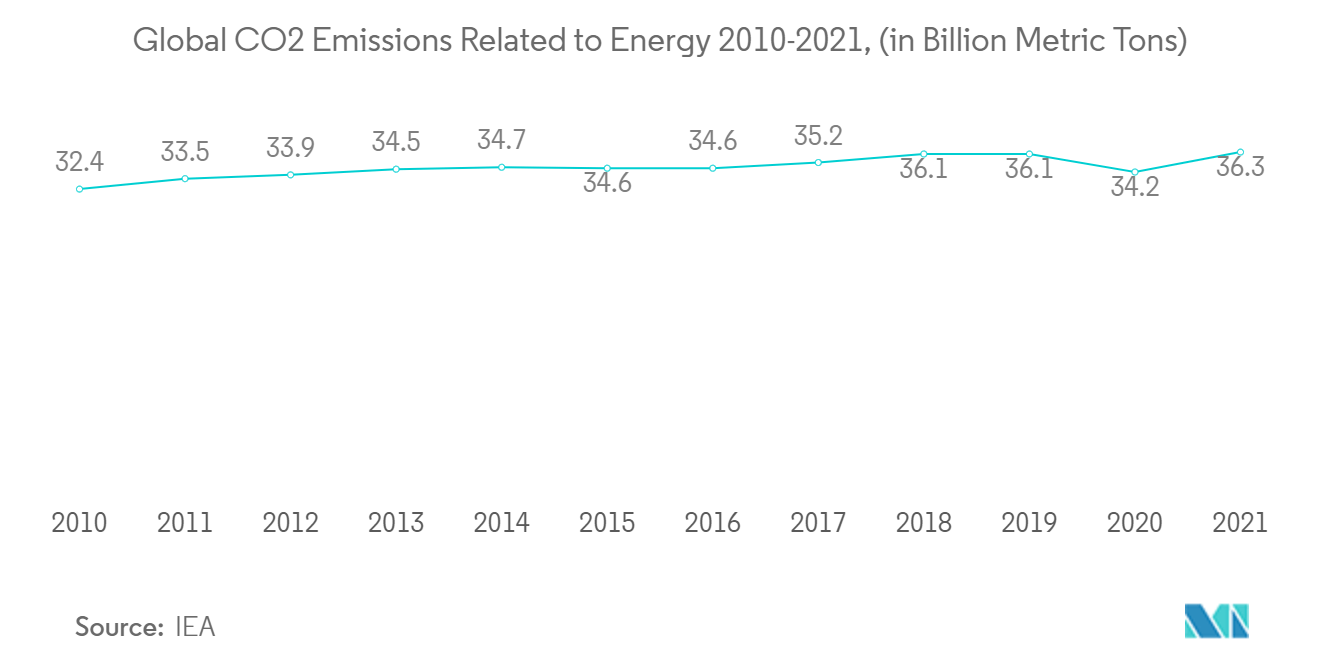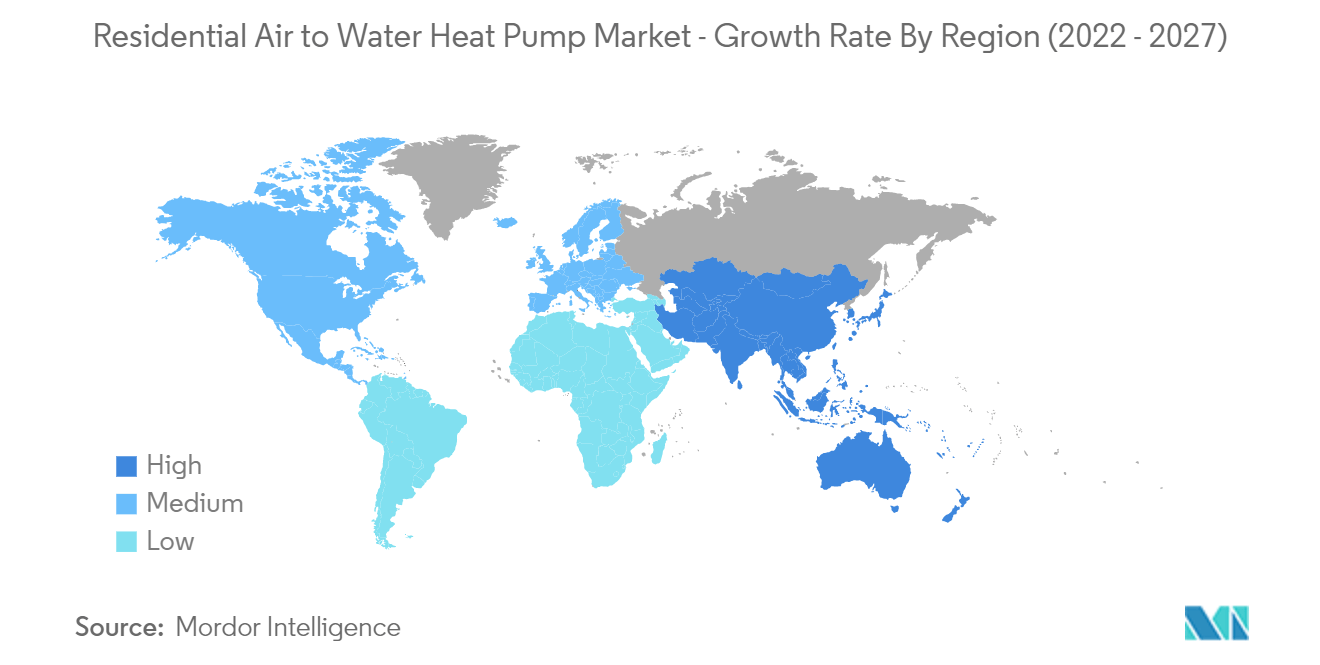Market Trends of Residential Air to Water Heat Pump Industry
This section covers the major market trends shaping the Residential Air to Water Heat Pump Market according to our research experts:
Meaningful Contribution of Heat Pumping Technology in Reduction of CO2 Emissions Drives Market
- Energy is necessary for daily life as it fuels businesses, hospitals, powered homes, and schools. However, energy generation leads to the discharge of greenhouse gases. As per EIA, energy consumption in the United States produced 4.87 billion metric tons of carbon dioxide (GtCO2) in 2021, an increase of 6.5% from 2020 levels. In 2020, emissions plummeted by 11% as a result of the outbreak of COVID-19, which heavily disrupted industry and travel.
- Carbon dioxide (CO2), which is one of the greenhouse gases, is released substantially through the burning of fossil fuels, such as coal, oil, and natural gas. Many countries aim to reduce their primary energy demand due to rising CO2 emissions and implement policies to limit greenhouse gases in the environment. The Residential Air to Water Heat Pump offers an energy-efficient way to provide space heating, thus fueling the market's growth.
- Carbon emissions associated with energy consumption and generation can be decreased considerably when air-to-water heat pump systems are utilized instead of fossil-fueled methods. This is driving a rise in the number of residential complexes with energy-efficient heat pump installations.
- On similar lines, in June 2021, the United States Environmental Protection Agency (EPA) announced advancements to the Energy Star program to reduce emissions by more than 50% by 2030. The authority upgraded the Energy Star standards for residential water heaters and heating/cooling equipment that advance innovative heat pump technology.
- The upgraded standards will be used as a key component to reduce carbon pollution and reduce energy and heating costs. It is estimated that if all central air conditioners, heat pumps, and electric water heaters sold in the United States met the new Energy Star standards, the savings are expected to increase to USD 11.0 billion a year. It may also avoid 255.0 billion pounds of greenhouse gases per year, which equals one-third of all direct greenhouse gas emissions from homes and apartments in the United States.

United States to Dominate the Market
- Air-to-water heat pumps have been utilized for many years in almost all parts of the United States except those that experienced extended periods of subfreezing temperatures. However, air-to-water heat pump technology has advanced in the last few years, which now offers a legitimate space heating alternative in colder regions.
- The US market is gradually catching up with other regions, such as China and Japan, as contractors embrace the coefficient of performance (COP) race, developing energy savings and environmentally friendly heating and cooling technology.
- Additionally, the US market is anticipated to witness substantial growth due to the growing concerns about controlling carbon footprints, coupled with the installation of government drives to support the adoption of residential air-to-water heat pump units. According to the EIA, it is estimated that 62.0 million metric tons of CO2 emissions will be produced using petroleum in the commercial sector in the United States by 2050.
- According to the United States Census Bureau and the US Department of Housing and Urban Development, privately owned housing started in August 2021 at a seasonally adjusted annual rate of 1,615,000, 3.9% above the revised July 2021 estimate of 1,554,000 and was 17.45% above the August 2020 rate of 1,376,000. The increase in construction activities creates new demand for air-to-water heat pumps.
- Growing demand for water and space heating, coupled with a rapidly recovering construction industry in the United States and complemented with repair and renovation activities, is projected to drive the demand for technologically advanced and compact heating solutions in the residential sector. For instance, according to BEA, the value-added construction industry contributed to 4.1% of the gross domestic product in the United States. It is anticipated that new construction put in place will total USD 1,449 billion by 2023.


